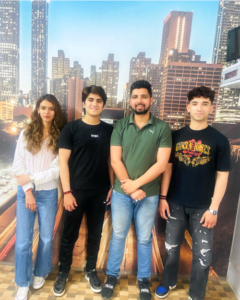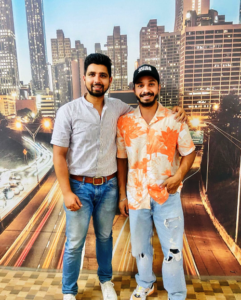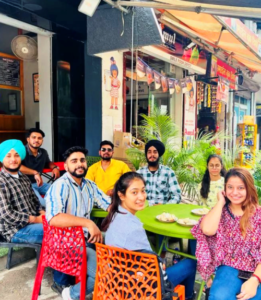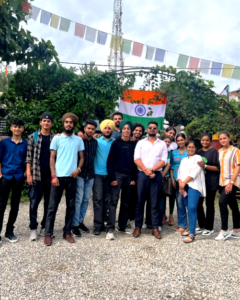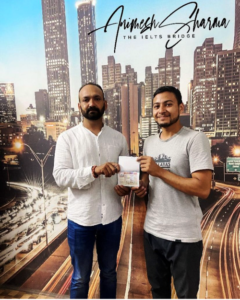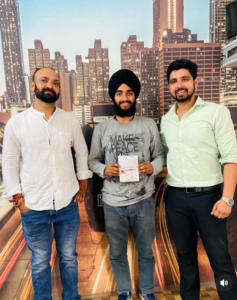Part 1: Questions 1-6
Complete the form below. Write NO MORE THAN THREE WORDS OR A NUMBER.
HOMESTAY APPLICATION
Surname: Yuichini
First name: (1)
Sex: female
Passport number: (2)
Present address: Room 21C, Willow College
Length of homestay: approx. (3)
Couse enrolled in: (4)
Family preferences: no (5) and no objection to (6)
Questions 7-10
Answer the questions below. Write NO MORE THAN TWO WORDS.
7. What does the student particularly like to eat?
8. What sport does the student play?
9. What mode of transport does the student prefer?
10. When will the student find out her homestay address?
Part 2: Questions 11-14
Choose the correct letter A, B or C.
11. What kind of tour is Sally leading?
A a bus tour
B a train tour
C a walking tour
12. The original buildings on the site were
A houses
B industrial buildings
C shops
13. The local residents wanted to use the site for
A leisure
B apartment blocks
C a sports centre
14. The Tower is at the centre of the
A nature reserve
B formal gardens
C Bicentennial Park
Questions 13-17
Label the plan below. Write NO MORE THAN TWO WORDS.
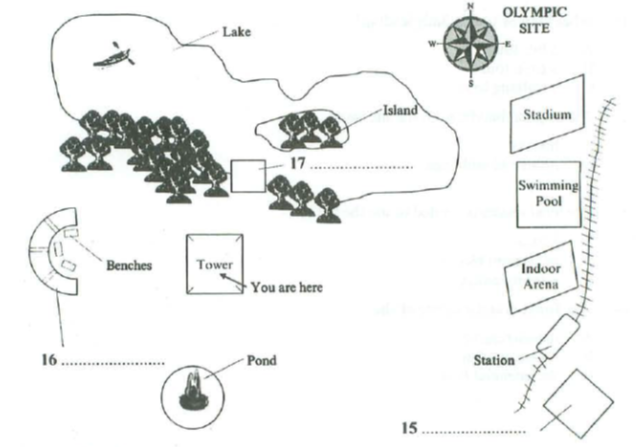
(13) (14)
(15) (16)
(17)
Questions 18-20
Complete the table below. Write NO MORE THAN TWO WORDS.
| Area | Facility | Activity |
|---|---|---|
| The Mangarove | boardwalk | (18)………………… |
| Frog Pond | outdoor classroom | (19)………………… |
| The Waterbird Refuge | (20)………………… | Bird watching |
(18)
(19)
(20)
Part 3: Questions 21 and 22
Complete the sentences below. Write NO MORE THAN ONE WORD AND/OR A NUMBER for each answer.
The presentation will last 15 minutes.
There will be (21) minutes for questions.
The presentation will not be (22)
Questions 23-26
What do the students decide about each topic for the geography presentation?
A They will definitely include this topic.
B They might include this topic.
C They will not include this topic.
Write the correct letter, A, B or C, next to questions 23-26.
23. Geographical Location
24. Economy
25. Overview of Education System
26. Role of English Language
Questions 27-30
Complete the table below. Write NO MORE THAN TWO WORDS.
| Information/ visual aid | Where from? |
|---|---|
| Overhead projector | the (27)…………….. |
| Map of West Africa | the (28)…………….. |
| Map of the islands | a tourist brochure |
| Literacy figures | the (29)………………. |
| (30)………………..on school places | as above |
(27) (28)
(29) (30)
Part 4: Questions 31-33
Monosodium Glutamate (MSG)
31. The speaker says the main topic of the lecture is
A the history of monosodium glutamate
B the way monosodium glutamate works
C where monosodium glutamate is used
32. In 1908, scientists in Japan
A made monosodium glutamate
B began using kombu
C identified glutamate
33. What change occurred in the manufacture of glutamate in 1956?
A It began to be manufactured on a large scale
B The Japanese began extracting it from natural sources
C It became much more expensive to produce
Questions 34-40
Complete the notes below. Write NO MORE THAN TWO WORDS.
Monosodium Glutamate (MSG)
• MSG contains
o Glutamate (78.2%)
o Sodium (12.2%)
o (34) (9.6%)
• Glutamate is found in foods that contain protein such as (35) and (36)
• MSG is used in foods in many different parts of the world.
• In 1908 Kikunae Ikeda discovered a (37)
• Our ability to detect glutamate makes sense because it is so (38) naturally.
• John Prescott suggests that:
o Sweetness tells us that a food contains carbohydrates.
o (39) tells us that a food contains toxins.
o Saltiness tells us that a food contains (40)


